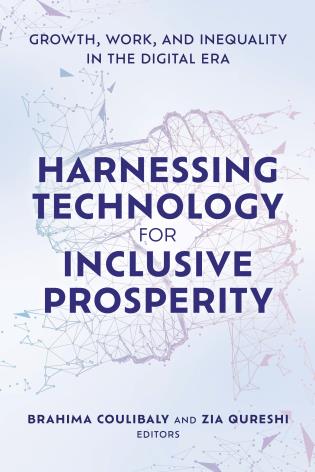This viewpoint is part of Foresight Africa 2024.
With dwindling opportunities in the public sector and limited opportunities in the private sector over the past decades, African youth have increasingly turned to entrepreneurship to create their own income and employment opportunities.
Sometimes it seems like everywhere we turn these days we hear talk of Africa’s youth demography and the latent economic potential therein. This is consistent with the “African renaissance”, “Africa rising,” and “lions on the move” narratives variously championed by African politicians, international media, and various institutions, financial and otherwise, since the end of the last millennium. These narratives have been fueled by the end of the Cold War, rapid globalization, the transformations brought on by advances in telecommunications and technology, a deepening of political democracies across the continent, and a hunger for new investment opportunities by international private and public investors. The telecommunications and financial sectors and consumer booms of the earlier 2000s served as further proof points. In October 2023, the New York Times wrote about the African “Youthquake.”
Beneath these collective narratives though, lies a complex and multidimensional reality that is 54 countries and economies potentially unified more by their challenges than their successes.
With dwindling opportunities in the public sector and limited opportunities in the private sector over the past decades, African youth have increasingly turned to entrepreneurship to create their own income and employment opportunities. Young people are venturing into industries ranging from technology, music and entertainment, agriculture, fashion, and renewable energy and becoming more mobile. With advancements in technology and access to information, some young entrepreneurs are leveraging digital platforms and social media to reach wider markets both domestically and internationally like never before. Within this growth, women entrepreneurship outside of traditional cultural roles is also on the rise. However, the full potential of this demographic profile and mobility will not be met if appropriate investments are not made in the building blocks of our economies. The enabling conditions, which are sorely lacking, include significant deficits in the hard and soft infrastructure which underpin modern economic growth and prosperity. The quality of health, education, and productivity for most women and youth continues to undermine their potential. Women continue to be restricted to low margin production and labor-intensive sectors with limited mobility and access to markets. Access to new technologies is constrained by the huge dearth in the anchoring infrastructure, notably power, transportation, and communication.
So how will we reap this demographic dividend? By investing in:
- Education: The general lack of affordable and accessible quality education hampers the skills and knowledge that are relevant for the labor market and enterprise. This reduces employability and earnings, and limits innovation and entrepreneurship. All the studies and empirical evidence demonstrate that education increases women’s agency thereby delaying premature marriage and childbearing and improving nutrition outcomes and prevention of disease, and as a result, reducing maternal and child mortality.
- Power: Affordable electricity is a foundational building block of any economy. Energy is critical to all productive activities and innovation and more so for climate and environmental health and technological advances.
- Infrastructure: Especially roads, connect people, resources, and information. From providing physical access to markets, customers, suppliers, to reducing transportation and transaction costs. Roads and other transport and communication infrastructure are the arteries of the economy, facilitating innovation, specialization, and competitiveness across the continent.
And so, herein lies the potential for investment and significant returns for governments and private (individual and institutional) investors determined enough to tackle them. The demand side is there. The supply is either lacking, too timid, or inconsistent.





Commentary
The future of African youth and women entrepreneurship and their roles in the region’s economy
June 27, 2024